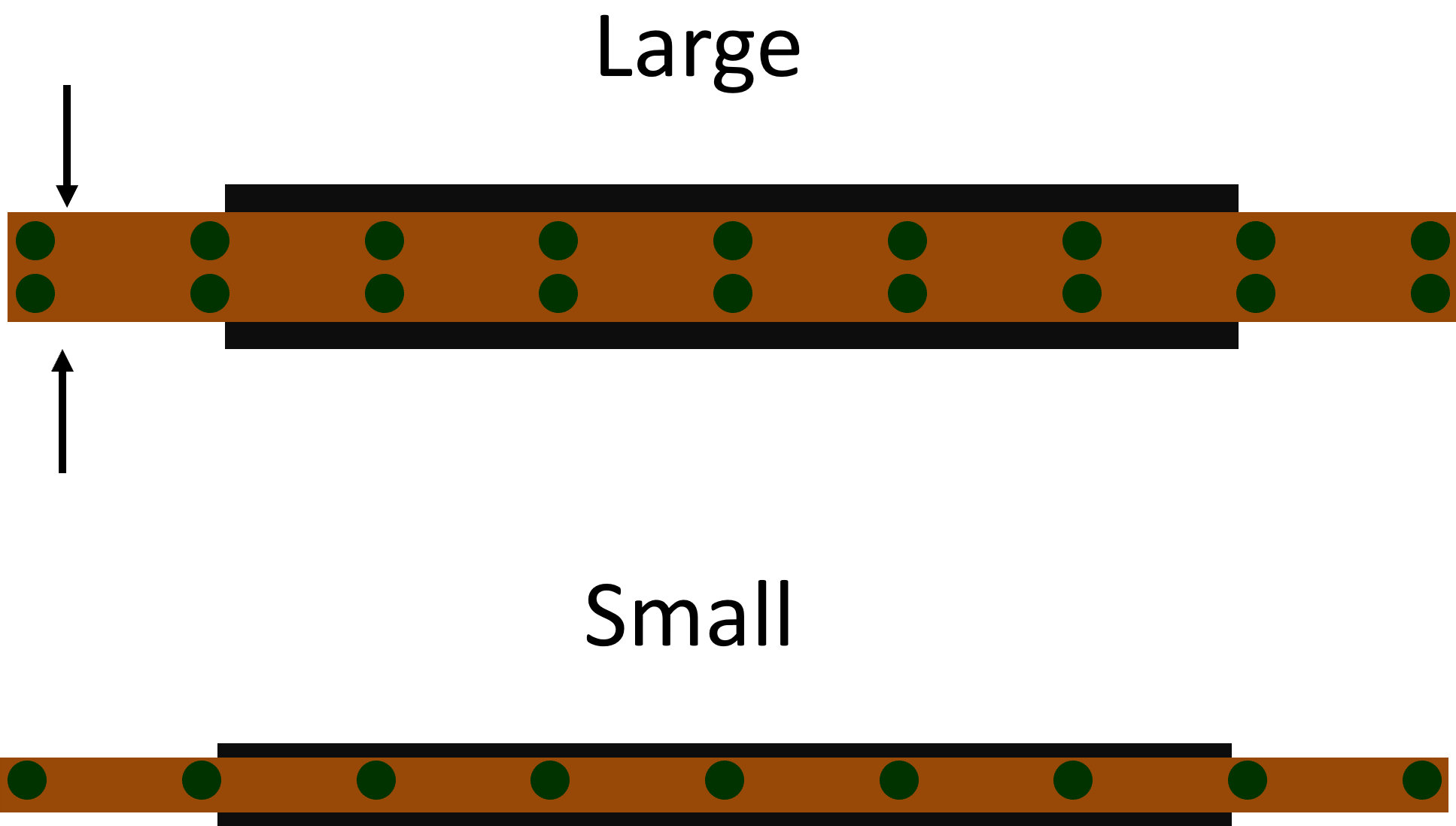Resistance and factors affecting Resistance explained.
Resistance is the opposition to flow of electrons due to bonds between electrons and protons, and the collisions of electrons among themselves as they make their way through the complex structure of a conductor.
A device designed with a known value of resistance or made to introduce a known value of resistance into a circuit is called a resistor. In designing a resistor the factor explained below are taken into account.
In a purely resistive circuit, resistance determine the amount of current that flows in a circuit in respect to the applied voltage. A purely resistive circuit is a circuit that don't have capacitance and inductance.
Factors affecting resistance.
There are four factors that affect the resistance of a material that are cross sectional area, length, temperature and type of material (resistivity).
1. Length (L).

Resistance of a material increases with an increase in length or resistance varies directly proportional to length of a material. That is if the length of a material is doubled, resistance is also doubled.

This is because as the length of a material is increased, the added material also has its resistance. This resistance is added to that of the material before increased.
2. Cross sectional area (A).

Resistance of a material varies inversely with cross sectional area or resistance decreases as the cross sectional area increases. That is if the cross sectional area is doubled, resistance is halfed.
This is because on large cross-sectional area, more electrons can pass through at the same time. Whereas on small cross sectional area, few electrons can pass through at the same time.
More electrons flowing at same time means low resistance while few electrons flowing at same time means high resistance.
3. Type of material (ρ).

Resistance depends on the type of material (resistivity). Resistivity is that resistance measured between two opposite faces of a 1m cube of a material such as copper.
Since resistance depends on resistivity, then resistivity is a constant of resistance. By putting resistivity in the combined above formulas, resistance is equal to resistivity multiplied by length all over cross sectional area.

4. Temperature
Resistance of a material changes with a change in temperature. For example, resistance of conductors increases with increase an in temperature while resistance of semiconductor decreases with an increase in temperature.
This is because electrons gain energy in form of heat and light to break from the nucleus and became free. If the temperature of a material is increased, electrons break from the nucleus and became available for conduction.
In semiconductors, an increase in temperature result in a decrease in resistance. This is because as temperature increases, more electrons in semiconductor material became available for conduction.
In conductors, an increase in temperature result in an increase in resistance. This is because a conductor already has free electrons in it. As the temperature increases too many electrons become available for conduction leading to excessive collision among electrons as they move, resulting in increase in resistance in conductors.
If resistance changes with a change in temperature, resistivity also changes with a change in temperature.
If we are to find the resistance of a material at the same temperature where resistivity was measured, there is no need to include temperature in the formula like in the previous formula of resistance.
But if we are to find the resistance at a different temperature were resistivity was measured, we then include temperature as in the following formula.

In the previous formula, temperature coefficient of resistance is the increase in resistance of a material, when a material is subjected to a temperature increases of 1°. For example, for copper it is 0,0043/°C.
How resistance is measured?
Resistance is measured in ohms by an instrument called an Ohmmeter. When measuring resistance, the ohmmeter supplies current to a component or circuit being measured at a certain voltage.
The amount of current which then flows is used to divide the supplied voltage and the value of resistance is obtained. Before measuring resistance, first disconnect the component to be measured from the supply otherwise this may cause destruction of the ohmmeter battery.
If you have made it this far, thanks for reading. Please consider subscribing to our YouTube channel for more electrical tutorials.